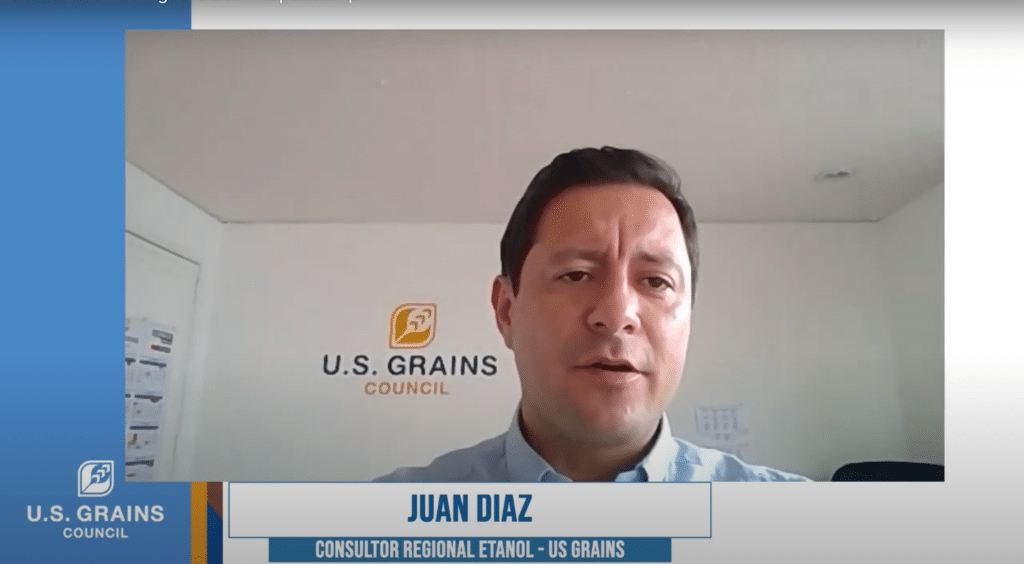The United States has continued to share its experience with E15 usage with other nations as they move toward higher blend options. For Latin America, the U.S. Grains Council (USGC) continues to encourage increased ethanol blend levels by emphasizing environmental, octane enhancement and cost-reduction benefits.
“E15 is a viable opportunity for Latin American countries to increase ethanol use, as there are already blend mandates in nine countries,” Carlos Suarez, USGC Latin America regional ethanol consultant, said. “The Council has been working with government officials and domestic industry to maintain and deepen product penetration in the four current markets – Brazil, Colombia, Peru, and Jamaica – and to develop new markets in priority countries such as Ecuador, Chile and the Dominican Republic.”
On Aug. 18, the Council’s Latin America office hosted Evolution Toward E15, a program to help inform policy makers and industry representatives across Latin America of the benefits of transitioning to higher blend levels.
Nearly 60 attendees from 14 countries – Bolivia, Brazil, Chile, Colombia, Costa Rica, the Dominican Republic, Ecuador, El Salvador, Guatemala, Paraguay, Peru, Spain, the United States and Uruguay – were present for the webinar facilitated by Suarez and Juan Sebastian Diaz, also a Council Latin American regional ethanol consultant.
“The program was a great opportunity to facilitate technical information to government officials and the industry in the region about the feasibility of implementing blend policies higher than 10 percent and to showcase the U.S. industry experience with ethanol,” Diaz said. “We consider the event as an opportunity to initiate discussion and cooperate with our trade partners to adopt higher ethanol blends.”
Mike Lorenz, senior vice president for market development at Growth Energy, provided the audience with background on the E15 adoption process in the U.S., while also reviewing the necessary technical aspects and benefits of the higher blend level.
“Ninety-eight percent of the gasoline in the U.S. is E10. If we went to 100 percent or 98 percent E15, the greenhouse gas emissions reduction would be equivalent to taking almost 4 million vehicles off the road,” Lorenz said.
One Bolivian attendee – Cristobal Roda, Aguai Sugar Mill operations manager – praised the Council for the timely information presented since Bolivia is considering raising its current blend rate.
“This event was well suited for the current situation in Bolivia as they are undergoing conversations with local authorities to raise the blend from E8 to E15 in the next six months,” he said. “All the technicalities raised in the webinar are similar concerns to the ones being raised by the local authorities. The explanations we heard at the webinar will definitely shed some light to the Bolivian ethanol industry for the upcoming negotiations with the national government.”
Through programming like Evolution Toward E15, the Council remains committed to providing discussion and cooperation opportunities with Latin American trade partners as they look to adopt higher ethanol blends.
“This program will serve to trigger strategic and working engagements with interested local partners to structure and execute new programs that will create new opportunities for ethanol in the region,” Diaz said.
Learn more about the Council’s ethanol work in Latin America.
About The U.S. Grains Council
The U.S. Grains Council develops export markets for U.S. barley, corn, sorghum and related products including distiller’s dried grains with solubles (DDGS) and ethanol. With full-time presence in 28 locations, the Council operates programs in more than 50 countries and the European Union. The Council believes exports are vital to global economic development and to U.S. agriculture’s profitability. Detailed information about the Council and its programs is online at www.grains.org.

